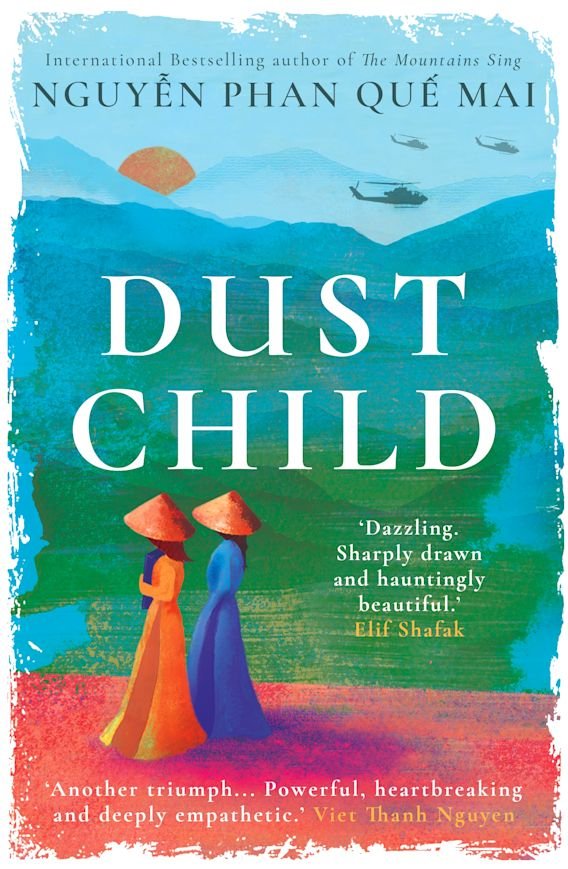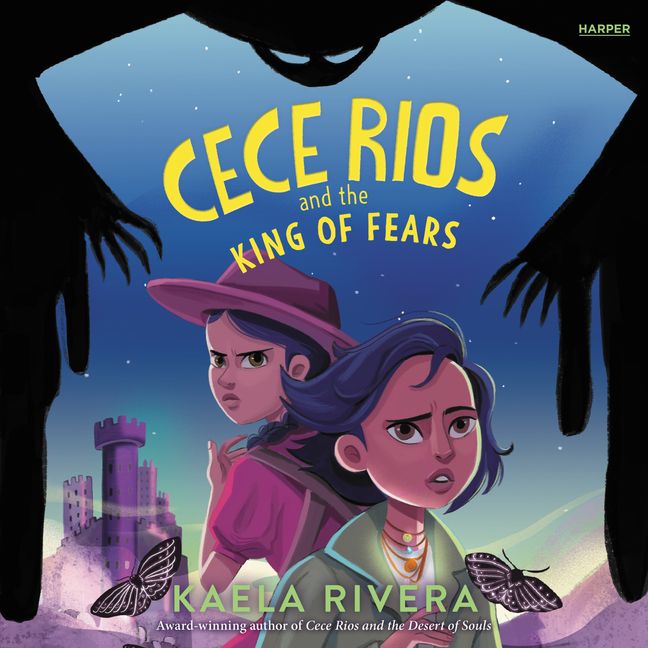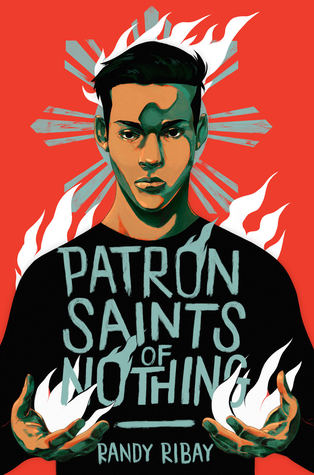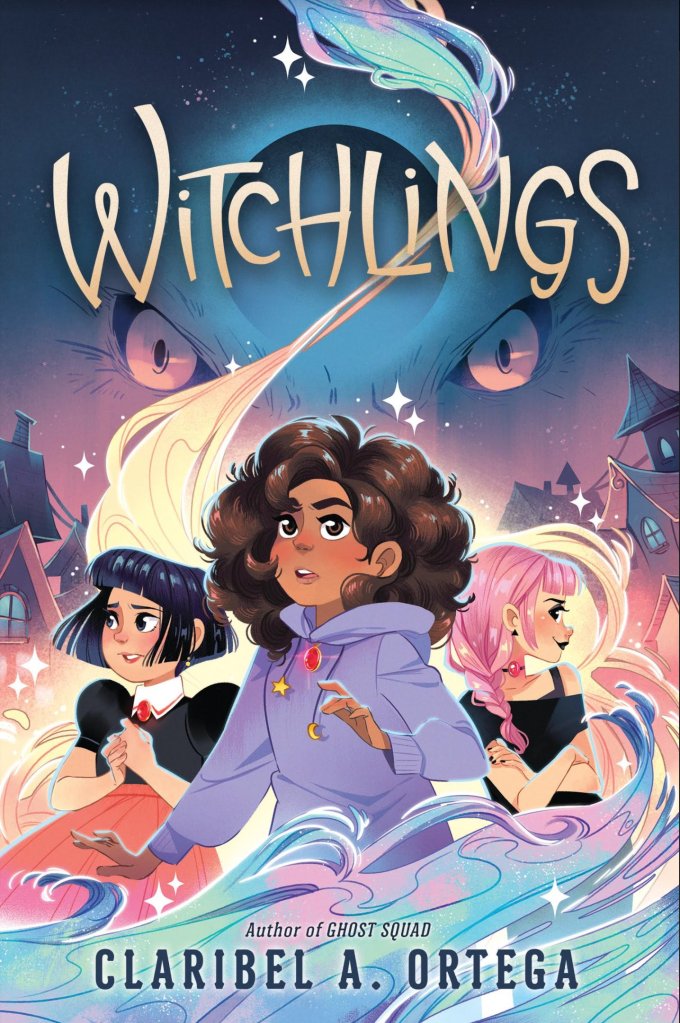Dust Child

There are three narrative threads here. The story of a “dust child”, the abandoned son of a Viet mother and a Black American father. The story of a Vietnam vet returning to the country for the first time with his wife and childhood sweetheart. The story of two Viet girls from the country who move to Saigon to save up money for their parents. But instead of just drinking “tea” in GI bars, as their friend told them, the are forced into sex work. The book is based in large part on research the author carried out for her PhD. I would have liked to have learned more about those experiences in a broader context. Phong’s story was the one that interested me the most as it dealt with his life from birth to the age he is now. The other stories are bounded with the teenage girls’ story being quite short on its own, before it intersects.
I understand why the introductory narratives are needed but I would have preferred to have had more focus on Phong’s story with the other stories woven around. I found him to be the most compelling character and I could have read even more about his life and his thoughts, though I learned a lot about him. The author’s motivation to emphasize Phong’s story is that many people don’t know the stories of the Amerasian babies left behind after the Fall of Saigon. I knew that Amerasian babies were treated very badly, along with their mothers if their babies hadn’t been abandoned but I knew just a glimpse of it. I didn’t know personal stories related to this before reading this book. There is much compassion and grace in the story told here and it does end on a happy note. A critique I have is that the depiction of the Vietnam vet was too gentle. It only portrayed him in a positive light. I don’t deny that many soldiers didn’t want to be in Vietnam and he suffered throughout his life for having been there. I also know the characters are based on interviews with vets and that vets like Dan exist. I found his part of the story less compelling and somewhat clichéd. The story of the girls forced into sex work is heartbreaking but it’s the truth of what happened to so many of them. I have Phong in my mind as I write this and I felt much empathy towards him. He overcame many struggles and even when you think he might give up, he powers on.
The Beauty Trials

I loved The Belles and was thrilled to see there was a third book in the series. The world building in this series is delicate and highly detailed. The teacup animals to the petits fours and other food they consume. But the stories go much deeper. The tea to soothe the pain from beauty treatments that only the wealthy can afford beauty treatments. In the absence of these treatments people are rendered grey. Following on from The Enchanted Rose this sees the main character facing off death to become queen of the land. Edel enters the contest despite her friends advising against. One of the requirements for the trials is that the women and girls take a poison and if they are considered worthy of being in the trials they will see a rose on their cheek. If they are considered unworthy they die. The stakes are very high and the action barely lets up.
Cece Rios and the King of Fears

The sequel to Cece Rios and the Desert of Souls. Cece now knows she is a curandera and a powerful one at that. She was able to save her sister from El Sombrerón but he kept Juana’s soul and her heart doesn’t beat without it. This story sees Cece and her friends, criaturas she has saved from Devil’s Alley, back to save her sister and the criaturas kept captive by dark forces. The story is told as first person narratives from Juana and Cece. They are working independently with the same goal in mind: to get Juana’s heart back as well as the others El Sombrerón has taken. Another goal is to free the criaturas from having to carry out tasks at the behest of their captors. The depiction of the criaturas is clever as they combine an animal part as well as a human part. One of the themes is self-determination and being able to make decisions for yourself, not what you are ordered to do.
In My Mother’s Footsteps

In 2007 Mona Hajjar Halaby spent a year at the Ramallah Friends School in the Israeli occupied territories teaching conflict resolution. She kept a diary during this time that serves as one archive of this trip. Another archive is the letters her mother sent her in response to Mona’s questions about their family history while Mona was living in Ramallah as well as photos. Her mother Zakia fled Palestine in 1948 for Egypt. She was in her mid-twenties when she left and she met her Palestinian husband in Egypt. Mona was born in Alexandria, Egypt but when she was eleven the family lost their home to nationalization and they fled to Geneva, Switzerland. At the age of twenty two Mona moved to California to be with her Palestinian husband. She has lived in California ever since.
Mona describes this book as a memoir in two voices. The story is somewhat bounded by the year she lived in Jerusalem, 2007, but many trips back into her family’s past intersect with this current period. Her travels around Jerusalem are informed by what she wants to discover and learn more about. She had traveled to Jerusalem before but hadn’t lived there for an extended period of time. The chronological shifts are also somewhat bounded geographically and Jerusalem in many ways is a player in the story too.
This is a critical read for anyone seeking to know more about Palestine in its historical and contemporary context. It is richly detailed and is told with warmth, compassion and justified deep emotion about Palestine’s place in the world and the Israeli occupation. In particular she reflects on the impact of the occupation on the children in the school. Mona Halaby is a supporter of the Middle East Children’s Alliance in Berkeley, CA and MECA supported the launch of this book. I strongly urge educators to read the book for its insights into teaching conflict resolution in a conflict zone and for the structure Mona uses to tell her family story. For everyone else I also urge you read this book to understand Palestine better and to be a supporter as well.
Patron Saints of Nothing

When seventeen year old Jay learns that his cousin Jun has died in Manila, ostensibly murdered in Duterte’s drug war, he travels to the Phillipines to find out the true story of what happened. Jun’s father is a police officer and rules his house with an iron thumb. He is constantly denigrating Jay for not knowing enough about the Philippines, having grown up in the US, There are many layers to this tale. There is Jun’s story which unpeels like an onion. There are the family stories and family ties. Jay’s’s dad is the only one in his family to live in the US. His aunts, uncles and paternal grandparents are all in the Philippines. As Jay pieces together what happened to Jun he becomes close to a friend of his cousin who is a journalist and they delve into the mystery surrounding Jun’s death. The emotional weight of the story is strong without seeming cloying. It doesn’t end where you think it will as life is more complex than just looking for a happy ending. The distance Jay travels, not just physically, was visceral. He is negotiating a “new” country and family relationships while uncovering that which people had tried to keep hidden, for reasons of hurt as well as shame. The story is rich in emotion and impact. It’s told first person and I was really taken along for the ride.
The Witchlings

Claríbel Ortega is one of my favourite middle grade writers. I loved Ghost Squad and was excited to read this. I’m happy to know the sequel is already out. The world is different to Ghost Squad as it takes place in an imagined magic place. On the night of the ceremony where witchlings are placed into covens Seven Salazar and two other witchings aren’t placed in any of the covens, they are “spares”. They try to become a coven of their own but it doesn’t work as it should. Seven suggests they take on an impossible task in order to become a coven, but if they aren’t able to complete the task they will be turned into toads. The impossible task is to get rid of a monster who is threatening the town. They are successful and the ending is what I was hoping for. The characters are somewhat nuanced and many are not who they seem.
13th St: Battle of the Bad Breath Bats

David Bowles is one of my favourite writers. He writes so well across many children’s literary genres.He is a Mexican American author who teaches at the University of Texas Rio Grande Valley. He has written a middle grade series that draws on Mesoamerican mythology, an award winning picture book and books of poetry for middle grade and young adult audiences and much more. He also translates works in Nahuatl and has written in Nahuatl. I find it hard to keep up with his work as his creativity shows no bounds. This is a transitional chapter book with spooky characters and plenty of challenges for the preteen protagonists. It is a lot of fun. It’s not as compelling as some of his other books but he knows his audience. This one and the other books in the series have a countdown of how many chapters you’ve read and how many you have to go. The illustrations work well to support the text. I can see this being motivating for children. They are definitely corny in large part but again this works well for the genre of transitional chapter books. They have human protagonists, not animals (the animals are the adversaries and he has fun with those) and this is sorely needed for transitional books.This is a transitional chapter book with spooky characters and plenty of challenges for the preteen protagonists. They’re a lot of fun. There is a countdown of how many chapters you’ve read and how many you have to go. I think this book reads its audience well. David Bowles writes across genres and it’s good to see him putting his hand to transitional books like these ones. They are fun and while somewhat corny, this works. I don’t know how many more I’ll read but I would recommend them as beginning chapter books. They at least have human protagonists, not animals, the animals are the adversaries and he has fun with those.
